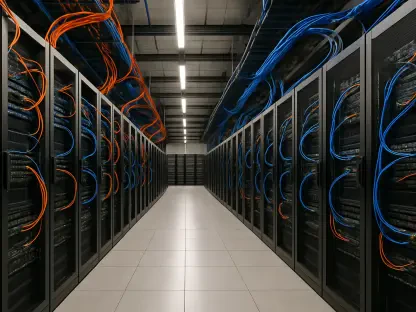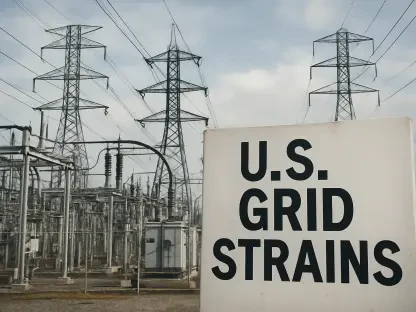The Energy Star program, initiated by the Environmental Protection Agency (EPA), has been pivotal for American consumers seeking energy-efficient appliances. Since its inception under President George H.W. Bush in 1992, Energy Star has helped consumers save more than $500 billion in energy costs, significantly impacting overall energy use across the nation. Its termination, proposed by the Trump administration as part of a larger effort to reorganize the EPA, highlighting enhanced efficiency and annual savings of $300 million, raises major concerns. Advocates argue that ending the program will limit consumer access to crucial information on energy efficiency, potentially leading to increased household energy costs and complicating energy supply management.
The Program’s Extensive Support System
Industry and Consumer Reliance
Energy Star’s reach within the industry is broad, with over 16,000 businesses and more than 1,800 manufacturers relying on the program to enhance demand for energy-efficient products. The program is used as a framework to develop and market goods that appeal to the environmentally conscious consumer. Its influence extends beyond appliances and technology into residential construction, exemplified by the fact that a quarter of new homes adhere to its efficiency standards. Manufacturers and builders have consistently leveraged this program to gain a competitive advantage in the marketplace, attracting consumers who prioritize sustainability.
The potential removal of Energy Star threatens this established ecosystem, prompting fears that manufacturers may struggle to meet consumer expectations for energy-efficient products. Without the program, businesses may face challenges in communicating their products’ efficiency, potentially dampening innovation efforts that have been cultivated over decades. Critics of the termination worry it could undermine progress in fostering sustainable technologies and stall advancement in reducing energy consumption across the country.
Economic Implications and Consumer Costs
The economic impact of ending Energy Star is multifaceted, with potential consequences for both manufacturers and consumers. For businesses, dismantling the program might mean increased expenditure on marketing efforts to establish new standards for energy efficiency, or developing separate proprietary methods to validate their products’ consumption levels. Meanwhile, consumers risk losing easy access to clear information related to energy savings, possibly resulting in higher long-term costs due to inefficient energy consumption in the absence of recognizable efficiency labels.
Advocates worry that Energy Star’s end will inadvertently lead consumers towards appliances that consume more energy over time, escalating costs. Without easily obtainable metrics, household energy budgets will likely fluctuate, potentially increasing without warning due to lack of efficiency standards monitoring. The dissatisfaction surrounding potential financial implications highlights concerns that dismantling Energy Star will have unintended burdens on both household budgets and national energy policies, both of which were previously supported and reinforced by the program’s initiatives.
Political and Environmental Ramifications
Bipartisan Support and Controversy
Energy Star has enjoyed significant bipartisan respect and approval, making the proposed elimination highly controversial. It has historically served as a model for cooperation between political parties in pursuit of energy conservation and efficiency. The Trump administration’s proposal to axe the program is viewed by many legislators and environmental organizations as an unsettling shift away from collaborative efforts that focus on sustainability measures.
Efforts to terminate Energy Star have ignited debates in policy circles, fostering concerns that the decision may represent a broader inclination to bolster fossil fuel consumption. The program’s elimination might not only deflate bipartisan efforts supporting energy efficiency but also create room for increased reliance on traditional energy sources. This perspective suggests that ending Energy Star is more economically motivated, pointing towards intentions to support the fossil fuel industry rather than championing innovative, eco-friendly alternatives.
Legislative Challenges and Advocacy
Environmental advocacy groups have consistently opposed Energy Star’s termination, asserting that it could hinder ongoing efforts to achieve national energy efficiency targets. They argue that dismantling the program diminishes the availability of foundational tools essential for strategic energy management at both micro and macro levels of society. Lawmakers sympathetic to these concerns have expressed significant opposition, further complicating budget deliberations and organizational restructuring proposals.
Continued advocacy by groups underscores a belief that program elimination threatens to compromise years of progress made towards environmental conservation. They view the move as a hurdle that compromises the trajectory towards sustainable living and energy consumption reduction on a national scale. Legislative challenges are expected to persist as proponents of Energy Star actively campaign for its preservation, aiming to safeguard the structural mechanisms that have historically contributed to comprehensive energy savings for the American populace.
Future Considerations and Outcomes
The Energy Star program, launched by the Environmental Protection Agency (EPA) during President George H.W. Bush’s administration in 1992, has played a crucial role in helping American consumers find energy-efficient appliances. Since its beginning, Energy Star has enabled consumers to save over $500 billion on energy costs, significantly reducing the nation’s overall energy consumption. However, the Trump administration’s proposal to end the program as part of a larger plan to reorganize the EPA with a focus on delivering greater efficiencies and cutting $300 million annually raises substantial concerns. Supporters of Energy Star argue that discontinuing the program may restrict consumer access to vital information about energy efficiency. This could lead to higher household energy costs and more complex energy supply management. Consumers rely on the program for guidance in making informed decisions about energy-efficient products, and its removal could hinder efforts to promote sustainability and cost savings in the long term.









